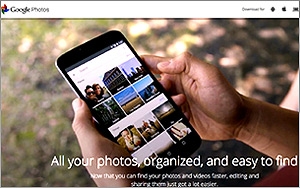Commentary
Powerful Images Capture Moods To Target Digital Ads
- by Laurie Sullivan , Staff Writer @lauriesullivan, June 8, 2015
 Photos establish a person's identity thousands of pixels at a time. There's nothing to fill out. No questions to answer. Just point, click and upload to a cloud server. Each click creates an
image. Put 50 together and you've created a story, a personal timeline or a representation of how you felt at that moment in time. Apple, Google, and Microsoft encourage people to upload those visual
timelines to the cloud by creating software that improves a user's ability to search and find specific things within the images. Just remember this.
Photos establish a person's identity thousands of pixels at a time. There's nothing to fill out. No questions to answer. Just point, click and upload to a cloud server. Each click creates an
image. Put 50 together and you've created a story, a personal timeline or a representation of how you felt at that moment in time. Apple, Google, and Microsoft encourage people to upload those visual
timelines to the cloud by creating software that improves a user's ability to search and find specific things within the images. Just remember this.
Technology that identifies images in photos like Google Photo will soon analyze -- if it has not already -- positive and negative moods based on a variety of attributes like colors and location in the photos. The ability to link the attributes in the images will become the next major piece of data that brands use to target specific audiences or individuals across search, display and other media.
In my opinion, products like these released from Google and Yandex last week that capture individual's moods from music through Yandex.Radio will become the next signal to integrate into search and other targeting platforms. While Google and Yandex make no mention that they will tie that data into ad targeting, I'm guessing they will -- if not now, eventually. Research released last week from Penn State College of Information Sciences and Technology also suggests this trend.
Many people (not me) have become comfortable uploading digital images to Google, Apple, Microsoft and other personal cloud services, because they doubt these companies (and they probably won't) will do anything stupid with the information, but the "information" has become far less important than the context of the digital images.
In search ad targeting, many brands now use weather and location data to target ads. Mood data collected from image of weddings, restaurants, and birthday celebrations will tell so much more. Smiles become less important, but what becomes more significant are the colors on the birthday cake and the number of candles; the style of clothing; the make, model and color of cars; and the surroundings like grass, flowers, mountains, and other scenery.
Do the subjects in the image act silly or stoic? What percentages of images were took inside vs. outside, international vs. domestic, and are the people in the photos wearing prints vs. solids?
The act of doing, uploading the photos, listening to music, (unless otherwise stated in terms and conditions) gives these companies the right to analyze an individual user's emotion to target digital advertisements (in my opinion). Remember, I'm musing.



